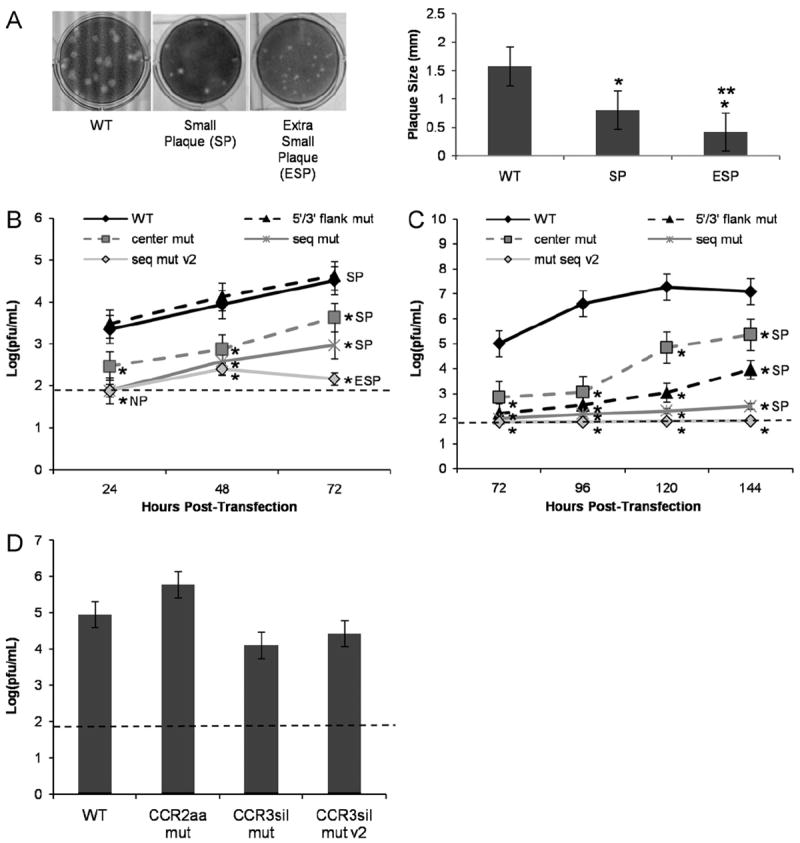Fig. 4.

CCR1 acts as a cis-acting RNA sequence element in modulating the viral life cycle in BHK and C6/36 cells. (A) Plaque phenotype in BHK cells obtained by transfecting BHK or C6/36 cell monolayers with the described mutant constructs (SP, small plaque; ESP, extra small plaque). Left panel: A representative image for SP generated from “seq mut” construct in IC-transfected BHK cells and a representative image for ESP generated from “seq mut v2” construct in IC-transfected BHK cells. Right panel: Plaques were measured (millimeters, mm) for each described plaque phenotype using 60 plaques from 3 independent experiments. (B) BHK and (C) C6/36 cells were transfected with IC-based mutant CCR1 constructs and assayed for viral titer (pfu/mL) by plaque assay. Viral titers were normalized to the amount of vRNA present in the cells at the time of harvest as measured by qRT-PCR. Results were obtained from 5 independent experiments, conducted in duplicate. Plaque phenotypes are indicated for each construct. (D) BHK cells were transfected with IC-based mutant CCR2 and CCR3 constructs and assayed for viral titer (pfu/mL) by plaque assay at 72 hpt. Viral titers were normalized to the amount of vRNA present in the cells at the time of harvest as measured by qRT-PCR. Results were obtained from 3 independent experiments, conducted in duplicate. The limit of detection is shown by a dashed line (1.9 pfu/mL). *p<0.05 relative to the WT. **p<0.05 relative to the SP. Error bars indicate standard deviation.
